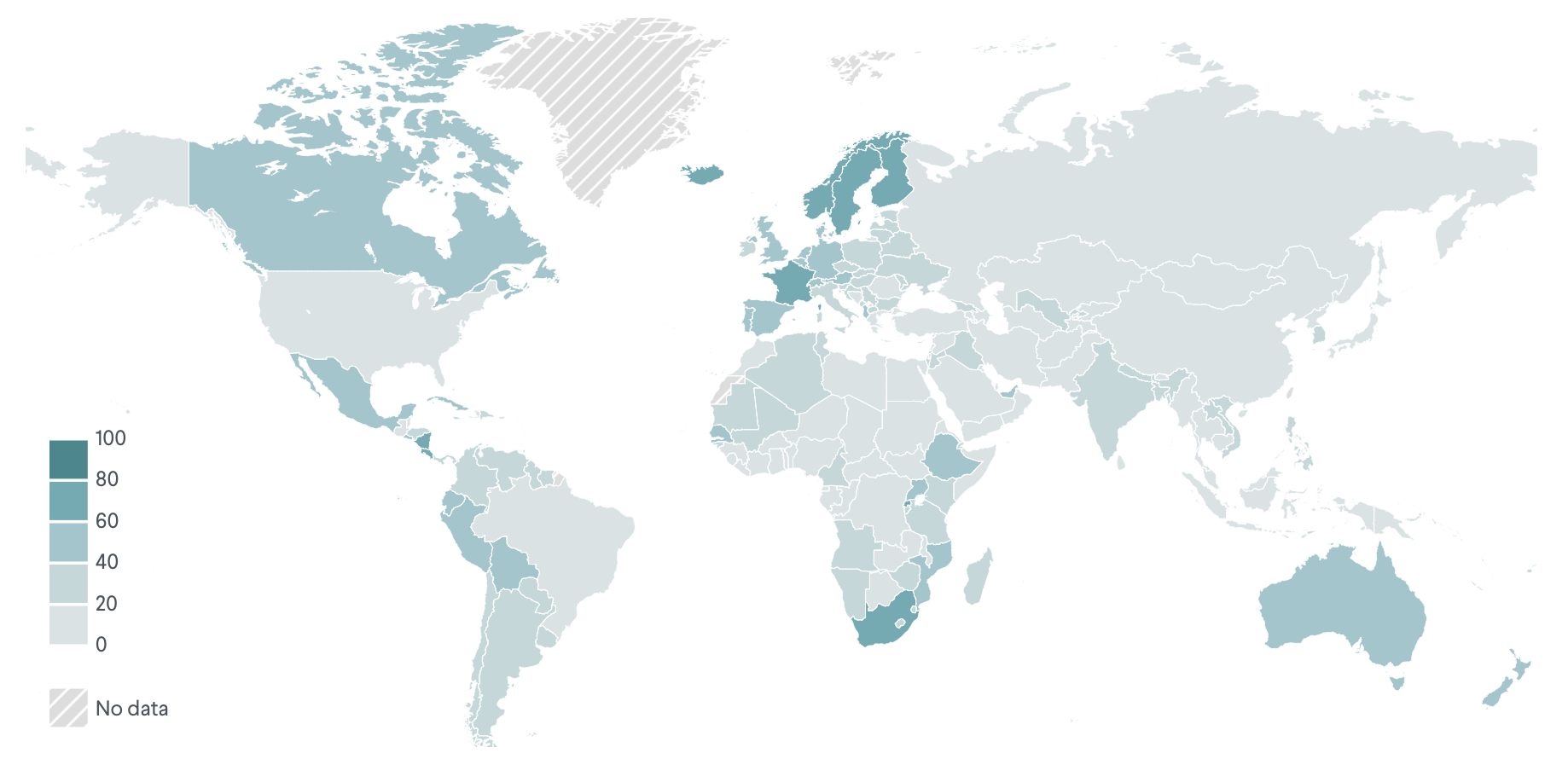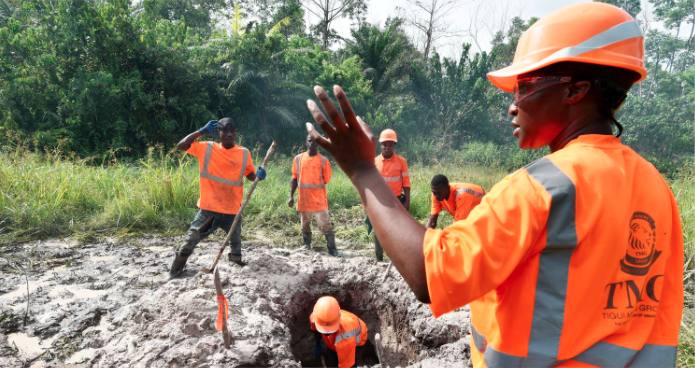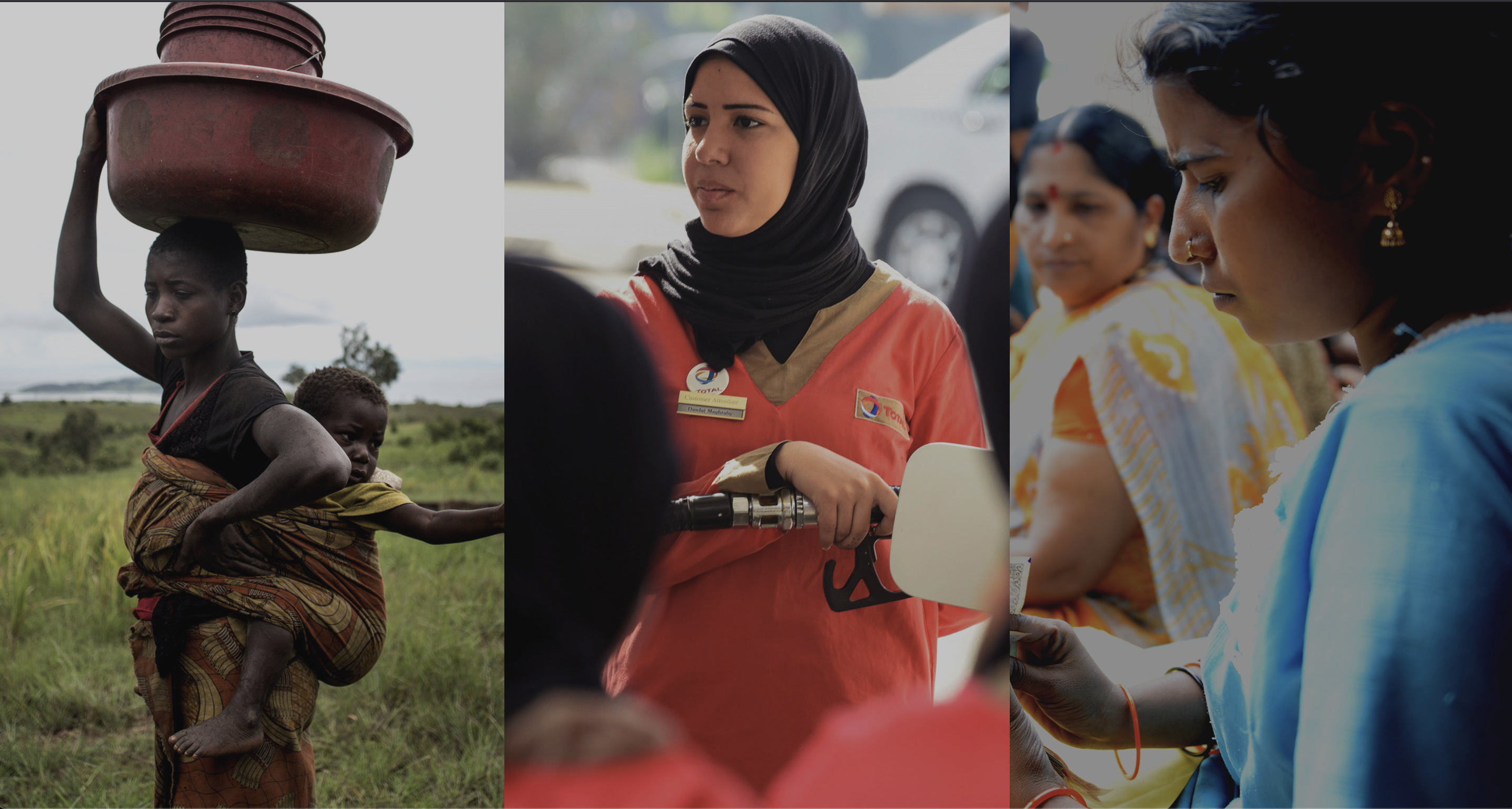Women have been underrepresented in formal roles throughout Myanmar’s tumultuous peace process. In the 2015 negotiations leading up to the Nationwide Ceasefire Agreement (NCA), only roughly 6 percent of negotiators were women. Though women’s participation was higher during multiple rounds of the 21st Century Panglong Union Peace Conference—fluctuating from 13 percent of the delegates in August 2016 to 17 percent in May 2017, 22 percent in July 2018, and 17 percent in August 2020, according to the Alliance for Gender Inclusion in the Peace Process—it was not able to reach the 30 percent target the conflict parties committed to in 2016. Formal peace negotiations are currently on hold as the country struggles with violent internal conflict resulting from the 2021 coup d’état by military leaders, which saw the overthrow of the democratically elected civilian government led by Aung San Suu Kyi.
Women’s groups have been viewed as honest brokers, built public support for the extended talks, and—at great risk—led local campaigns to address underlying causes of the conflict. They were instrumental in launching and participating in a series of civil society peace forums to convey civil society priorities in the official process. Since the 2021 coup, women-led civil society organizations have been at the forefront of efforts to protest military rule, shine a light on the abuses of the military government, assist victims, and resume efforts to build a federal democratic Myanmar.
Since Myanmar gained independence from the British in 1948, various armed ethnic groups seeking greater autonomy from the government have fought the world’s longest-running civil war. Fighting has killed tens of thousands and displaced hundreds of thousands. In recent years, Rakhine state has seen particularly high rates of forced migration, armed violence, and persecution of the Rohingya Muslim minority. Across Myanmar, women and girls from ethnic and religious minorities have suffered a range of abuses by both the military and armed groups, including sexual violence, abductions, forced labor, and trafficking. In 2018, the United Nations listed Myanmar’s military, the Tatmadaw, in its annual list of parties who have committed sexual violence in armed conflict.
A patchwork of bilateral state-level cease-fires throughout the 1990s did little to end the violence, but, in an important step forward, the Nationwide Ceasefire Agreement was signed in October 2015 between the government and eight of the then-sixteen armed ethnic groups after two years of negotiations. In 2018, an additional two groups joined the agreement. Historic elections in November 2015 resulted in a decisive victory for Aung San Suu Kyi’s National League for Democracy (NLD) party, ushering in a new era of civilian government after nearly fifty years of military rule. The NLD-led government declared the peace process a priority and in August 2016 hosted the first 21st Century Panglong Union Peace Conference with broad representation, including seventeen of Myanmar’s twenty largest ethnic groups.
Four Panglong Conferences were held from 2016 to 2020, though progress to advance the formal political dialogue outlined by the NCA was slow. The NCA is now in question after the coup. Aung San Suu Kyi was sentenced to seven years in prison by a military court and is currently imprisoned. But before her arrest, her party formed the National Unity Government (NUG), a shadow government that is working to build military and political alliances with Myanmar’s ethnic groups in an effort to restore democracy.
The military regime, which calls itself the State Administrative Council, has indicated that it would like to resume NCA negotiations, but many parties in Myanmar understandably question its motives. The situation within Myanmar remains volatile: the military has committed extreme human rights violations, and armed struggle with the NUG-linked People’s Defense Force is increasing, resulting in massive displacement and the erosion of the gains made in the years leading up to the 2021 coup.
Women have fought in armed groups, campaigned for peace, faced imprisonment for opposition politics, and survived conflict-related sexual violence and abuse over the course of Myanmar’s conflict. They are playing a leading role in the struggle against the military regime, comprising an estimated 60 percent of protestors. Yet women have been underrepresented in formal roles in the peace process: for the 2015 NCA—signed in October 2015—women represented only two of the fifty-two government negotiators. The Senior Delegation, which represented the ethnic armed organizations (EAOs), did slightly better, with two female members of a fifteen-person delegation. Notably, the EAOs had a woman—Naw Zipporah Sein—serve as lead negotiator for their group. The EAOs also had two women serve as technical advisors for the peace process. Nang Raw Zahkung and Ja Nan Lahtaw, executive director of the Nyein (Shalom) Foundation, one of Myanmar’s leading peace organizations, Ja Nan Lawtaw also served as one of two facilitators of the talks.
The formal ceasefire implementation mechanism, the Joint Monitoring Committee, also suffered from sluggish performance and did not have sufficient gender balance in its union- and state-level offices. Despite a 2016 commitment by the conflict parties that women would represent 30 percent of participants, their representation remained low.
In the Panglong political dialogue process, women’s representation fluctuated from 2016 to 2020, with a high of 22 percent in 2018 and a low of 8 percent in January 2016. Notably, two of the three facilitators of the formal political dialogue were women—Ja Nan Lahtaw and Chin Chin.
Beyond the formal peace process, Burmese women have led mass action campaigns to address the root causes of the conflict, built public support for the peace process, served as honest brokers in negotiations, and documented human rights violations to promote the rule of law. With attention now turned to the military-led government and its campaign of repression, women continue to play a leading role in the pursuit of peace and democratic federalism. The NUG has prioritized women in leadership, for instance, with Zinmar Aung serving as foreign minister.
Myanmar women have fought in armed groups, campaigned for peace, faced imprisonment for opposition politics, and survived conflict-related sexual violence and abuse over the course of Myanmar’s conflict.
- Women
- Men
women
Lead protests against military government. Women have been on the frontlines of protests against the military government. The Women’s League of Burma estimates that women have made up 60 percent of the protestors. These efforts helped generate widespread opposition against the military government and have generated support for the National Unity Government.
Act as honest brokers. Women served as experts in the 2015 Nationwide Ceasefire Agreement; they were selected because they were seen as “impartial, trusted by all groups, and had deep knowledge of the technicalities of cease-fire accords and implementation practices.” They also serve as facilitators—a type of insider mediator—in both the ceasefire negotiations and the following political dialogue process; Ja Nan Lahtaw reflected that her male co-facilitators would ask her to handle tense situations because “as a woman I can say things that are perceived as less threatening.”
Lobby informally. Women have acted as informal observers and back-channel communicators, serving as intermediaries with civil society groups. Women have also been involved in “tea-break advocacy”; when they were unable to secure a formal place at the table, women lobbied male delegates while serving them tea during recesses. During these informal lobbying talks, women have reportedly brought up critical issues affecting ethnic minorities, including land rights, native-tongue education, community security, and forced displacement.
Document human rights violations. To promote rule of law as part of Myanmar’s democratic transition, women’s groups have documented human rights violations perpetrated by the military and armed ethnic groups and have sought to publicize their findings to increase awareness and accountability (contributing to the UN’s 2018 listing of Myanmar’s military for crimes of sexual violence in armed conflict). The sisters2sisters organization, started after the 2021 coup, is a social media campaign working to raise awareness about the use of excessive force and violence against women perpetrated by the military government.
Lead mass action campaigns. At the grassroots level, women have led campaigns to address issues at the heart of the conflict, including land rights and equitable sharing of natural resources, as well as issues critical to society’s recovery, such as education and health care. They have done so at enormous risk, and many have been detained and arrested because of their leadership. Since the 2021 coup, women have increasingly been using social media to advocate for a return to democracy and the end of military rule. But they are doing so at great personal risk. According to UN experts, the military is terrorizing women in online spaces. “Every day, women are being threatened online with sexualised violence because they are standing up for human rights, opposing the military’s attempted rule, and fighting for a return to a democratic path. ‘Doxxing’ and other forms of online harassment add to the multiple threats that women activists human rights defenders and independent associations are already facing in Myanmar.”
Speak across divides. Representatives of ethnic-minority women’s organizations have been able to form alliances to speak directly with representatives of armed ethnic groups. May Sabe Phyu, a prominent peace activist, said women are able to broker trust across divides based on common goals: “We want to participate in the peace processes not because we want to get power or position...We want our next generation to live in a conflict-free society.”
“Peace in Burma needs the efforts of Women. It needs our strength and our power to care and our point of view. Peace making that is based only on short term rewards and economic development will bring only more conflict and violence.”
— Naw Zipporah Sein, former vice president of the Karen National Union






